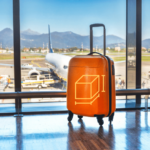
The Swiss Cheese Model is a risk management method that is widely used in various industries, including healthcare, aviation, and engineering. This model provides a visual representation of how accidents occur and how they can be prevented.
Understanding the Swiss Cheese Model
The Swiss Cheese Model was developed by James Reason, a British psychologist. The model is named after the Swiss cheese because it uses the visual metaphor of a stack of Swiss cheese slices to illustrate how different layers of an organization can work together to prevent accidents.
Each slice of cheese in this model represents a layer of defense, such as policies, procedures, or systems, that are designed to prevent accidents. The holes in each slice represent weaknesses or failures in each layer. When the holes in all the slices line up, an accident occurs.
Reducing Risk with the Swiss Cheese Model
The Swiss Cheese Model emphasizes that risk reduction is a multi-layered process. Here’s how it can be applied to reduce risk:
- Identify the Layers: The first step is to identify the different layers within an organization that contribute to safety. These could include technical systems, human factors, organizational processes, and even the external environment.
- Analyze the Holes: The next step is to identify the potential weaknesses or failures in each layer. This could involve conducting risk assessments, audits, or incident investigations.
- Strengthen the Layers: Once the weaknesses have been identified, the next step is to strengthen the layers of defense. This could involve improving systems, providing training, or changing organizational policies.
- Monitor and Review: The final step is to continuously monitor and review the effectiveness of the layers of defense. This involves regular checks and updates to ensure that the layers are functioning as intended.
The Swiss Cheese Model provides a valuable framework for understanding how accidents occur and how they can be prevented. By identifying and strengthening the layers of defense, and continuously monitoring their effectiveness, organizations can significantly reduce the risk of accidents. This model serves as a reminder that safety is a shared responsibility that requires the involvement of everyone within an organization.

















Leave a Reply